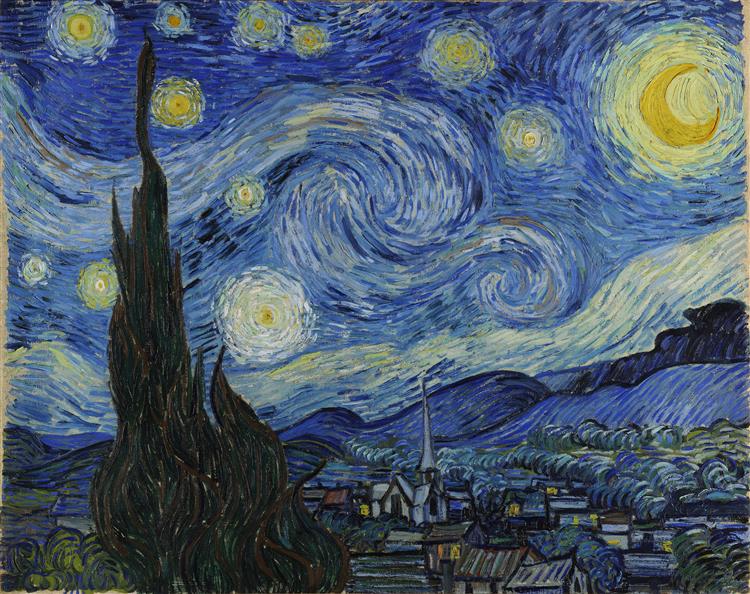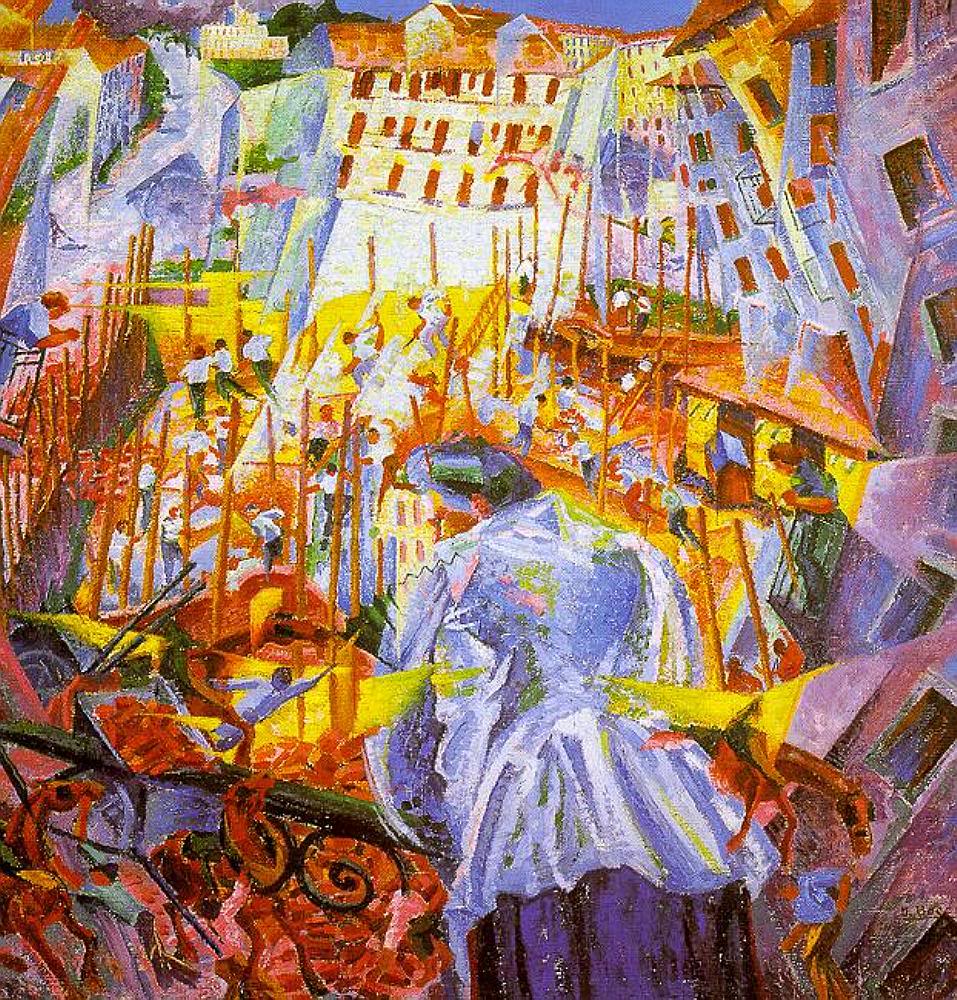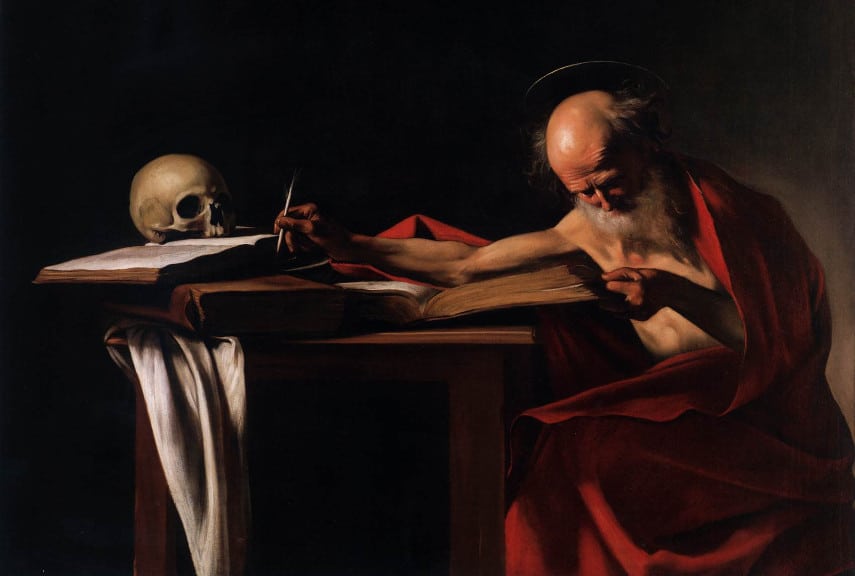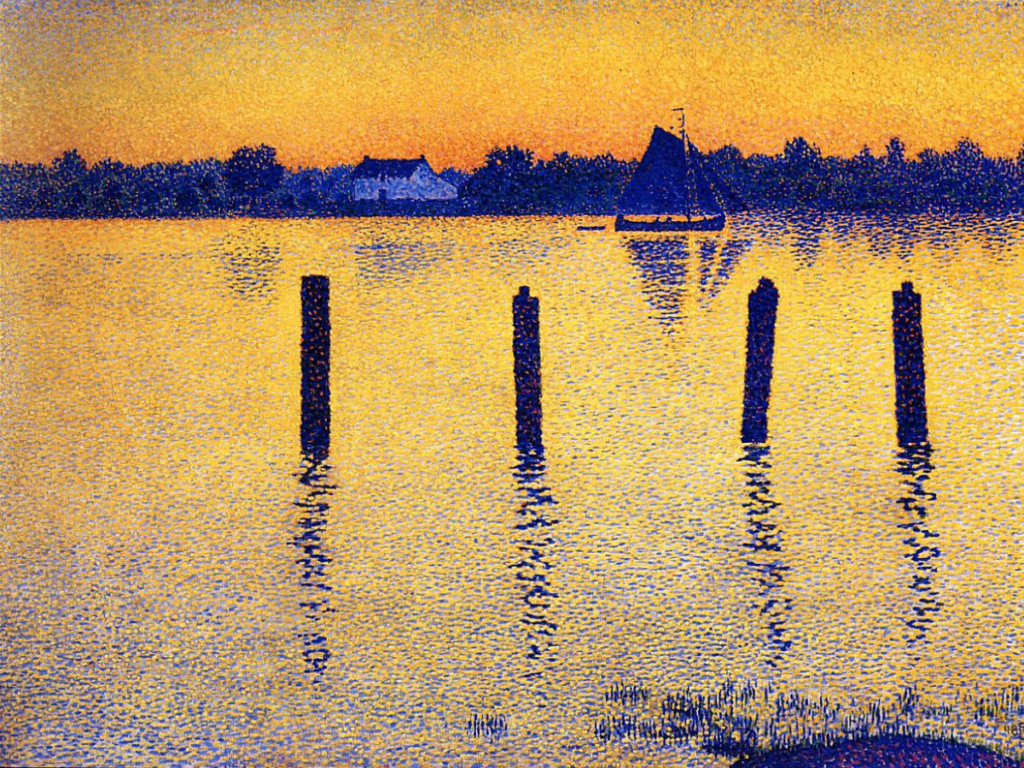Rhythm in art is an important principle that can make a painting, sculpture or other artwork come alive. It is created by the rhythmical repetition and variation of colours, shapes, textures and lines to lead the viewer’s eye around the painting. Rhythm contributes to the overall composition of an artwork, making it more interesting, dynamic and harmonious.
In this guide, learn exactly what rhythm in art is. Then learn about the different types of rhythm, with examples of how it has been created in famous paintings. Finally, discover how to compose paintings and drawings to create a sense of rhythm yourself.
Disclaimer: Fine Art Tutorials is a reader supported site. When you make purchases through links on this site, we may earn a small commission at no extra cost to you.
Definition of rhythm in art
Rhythm is a principle of art that helps to create movement, structure and focus within an artwork. Depending on the emphasis, repetition and contrast of the visual elements in a piece, the artist can plan which subjects will draw the eye first, then which subjects or objects will draw the eye next, where viewer’s eyes are likely to linger and so forth. This creates a visual trajectory for the viewer that feels rhythmic. Some colours or shapes in an artwork will hold the viewer’s attention for longer, while others will act as negative space. There is tempo to a viewing rhythm, that is based on the hierarchy of dominance of shapes, colours, lines and values in an image.
Elements of art and visual weight
Artists formulate and arrange the visual elements to create rhythm. By arranging visual elements such as line, colour, shape, form, texture, value and space, artists can achieve rhythm through the hierarchy and relationships of these elements to one another.

For example, a larger shape will attract more attention than a small shape. A saturated colour will attract more attention than a muted colour. So in an image of a large, bright, red square placed next to a small grey circle, the viewer’s eye will be attracted first to the square, then to the circle. The visual hierarchy created by the dominance of the elements, creates a viewing path.

When we repeat the shapes, it creates a viewing path with more rhythm. The repeated shapes and colours cause the eyes to bounce back and forth between the elements. Larger shapes tend to stand out more, as do more complex shapes with more sides. However, it’s likely that the most salient element of the image is the bright red colour. So viewer’s will likely be drawn to the red square first, then perhaps the larger grey square, then the red circle and so on. Viewer’s look for connections when viewing art, so the red circle may make them pay attention to the red square again. This simple example essentially illustrates how a viewing rhythm works.

Repeating visual elements creates rhythm. For example, in this piece by van Gogh, the repeating, flowing and curving branches of the trees pull the viewers eyes around the piece. This creates the impression of a trembling, rhythmic sensation of wind moving through the tree.
Types of rhythm in art
Regular rhythm

Regular rhythm is created by repeating the same elements throughout a composition in a pattern, with the same size, shape or space within and between the elements. This type of rhythm is often geometric in appearance.

A more complex example can be seen in this piece by Escher. The gaps between the insects and the fish remain the same, however the level of detail within the space changes. Despite the regular rhythm in the piece, Escher creates variety by transforming the negative space of the black between the white fish, to positive space, illustrating insects on one side and birds on the other.
Flowing rhythm in art

A flowing rhythm involves elements that appear organic in shape, with curving lines and shapes that don’t appear regular. It creates an overall sense of movement and energy in a painting. The repetition of organic, rhombus shaped ripples, appear to build and flow into the crashing wave. The overall swirling shape of the wave creates a leading line to the focal point of the crest of the breaking wave, which is lighter and more saturated in tone than the other parts of the painting.
Progressive rhythm

Progressive rhythm is created when elements in a composition are rhythmically repeated but gradually change over time. For example, elements may repeat, but appear larger in size, or different in colour, lighter or darker. The rhythm comes from the sense of progression and change. Ivan Shishkin has drawn the repeating pines getting gradually smaller as the reach the beach.
Alternating rhythm in art

It involves the rhythmical alternation of different elements within a composition such as colours, shapes, textures and lines. Usually two or more elements are used interchangeably to create a pattern. The alternation of blues and oranges in the Café Terrace at Night creates a sense of rhythm, ebb and flow.
Random rhythm

A random rhythm will contain repeating elements, but they will be repeated in an irregular fashion. For example, the artist will not plan the order of the repetition, or where the elements within the composition will appear. It has a rhythm, but it’s not strictly regular or predetermined. There is repetition in the colours and shapes of the rocks and forms of the distant trees, but the piece appears organic, asymmetrical and random.
Examples of rhythm in famous artworks

Throughout history, rhythm has been used by artists to create visually arresting and beautiful works of art. For example, Vincent van Gogh’s Starry Night (1889) is a striking example of rhythm in action. The painting is filled with repetition of curving lines and swirling colours that create a rhythmical back-and-forth motion. Furthermore, the stars twinkling in the night sky creates an overall sense of rhythm and harmony throughout the painting.

This cubist painting by Jacob Lawrence demonstrates the use of alternating rhythm, with repetitive shapes and interchanging colours. The boldness of the colours and the angular nature of the shapes create a sense of dynamism, which adds to the rhythm of the piece.
Leading lines

In a composition, artists will choose to use leading lines to direct the viewer around the work. These lines can lead viewers to various focal points. These leading lines contribute to creating a viewing rhythm of consecutive focus for the viewer. For example, in this painting by Edgar Payne, the viewer is directed from the large shapes and bold colours of the mountain, then to the three horse riders on the bottom left. The complexity, gesture and dark values of the figures draw the viewer’s eyes quickly from the large, overpowering mountain.
Rhythm and tempo
It can describe how certain visual elements are repeated, or changed throughout a piece in order to lead the viewer’s eye around. Rhythm acts like a visual path and the tempo describes how quickly the eyes will move around.
Artists will often plan the composition of their piece before they start working to establish the visual hierarchy of the different visual elements. This way they can predict where the viewer’s eye will be drawn to first and the tempo with which each element should be viewed.

For example, a painting with large complex shapes and bold, saturated colours of orange and reds can be quite overwhelming to look at. With so many visual elements trying to grab the viewer’s attention, the eyes will likely dart from subject to object at a fast pace. This is an example of a fast visual tempo. Umberto Boccioni’s painting has a fast visual tempo, with bold colours and angular complex shapes all demanding attention. However, the cool, muted tones, lighter values and simpler shapes slow the pace down, serving as a visual rest from the chaos.
Techniques to create rhythm
Rhythm can be achieved through the use of various techniques:

Repetition is when elements are repeated within a composition to create rhythm. This can be done with shapes, colours and lines, or more complex visual elements such as figures or objects. Van Gogh roughly repeats the shapes and colours of the irises to create unity and rhythm.

Gradation is when elements within the composition change in size, shape or colour gradually. For example if an artist was to paint a forest, they could use gradation to show the trees getting smaller and further away from the viewer. In the painting by Paul Signac, the boats get progressively smaller as they appear to recede into the distance.

Alternation is when two or more different elements are rhythmically alternated to create a visual pattern. This can be done with contrasting colours, shapes or textures. Renoir alternates the blue of the lake and the woman’s dress, with the bright red of the boats.

Contrast is when elements within a composition have been rhythmically arranged in a way that creates contrast between them. In Klimt’s famous artwork, the geometric design of the dress, contrasts against the flowing shapes of the skirt. This leads the eye around the piece.

Leading lines are rhythmical lines that lead the viewer’s eye around the composition to create movement and flow. Artists will use lines to direct viewers to focal points, or other points of interest. The lines of the horizon and building lead the viewer’s eye to the figures at the forefront, bringing their attention back to the focal point, in this piece by Gustave Caillebotte.
Principles of art
The principles of art and design are: rhythm, balance, contrast, emphasis, harmony, proportion and variety. Other principles of art and design can include: visual hierarchy, pattern and unity. The visual elements such as value and colour are used to create these characteristic principles. Balance, contrast, pattern and the other principles can work synchronously with rhythm to create visually stunning works.

It’s the use of contrast to create salience, or repetition to create harmony that creates a sense of movement and flow. Therefore, this produces a rhythmic visual path for the viewer. In the example of Caravaggio’s oil painting, the dark and light values contrast to create emphasis. However, the shapes of the figure, skull and fabrics mirror each other, producing harmony and unity. The viewer will likely pay attention to the figure, then the skull, then the fabric and book, then back to the figure. The visual path is concentrated in the middle of the piece on the lighter values and brighter colours, due to the contrast.
So you can see how the principles of art are interconnected. When one is used it usually affects the outcome of another. It can therefore be helpful to talk about their relationships. This is so that artists can differentiate between them and describe artworks that exhibit the different principles better.
How to create rhythm in art
Plan the composition and rhythm of your piece before you start. Break it down into its individual elements and decide where the rhythm should be, or which element will lead to the next. You can also decide what kind of rhythm you want to create, whether it’s random or flowing.
Think about what you want the main focal point to be, how you might use leading lines to draw attention to the points that will be emphasised, then how you will repeat certain elements throughout the artwork. You don’t have to use too much repetition, but using a repetition of colour for example, can produce a sense of unity and harmony that ties the piece together.
After you plan the composition, make sure to draw the outline of the painting before you start so you know how the different elements will fit together. This also improves the accuracy of the painting.
If you are completing a painting, you can use a limited palette of colours to help create balance and repetition in tones and hues you mix.
The importance of rhythm in an artwork
Rhythm is an important element in art because it helps to create a visual path for the viewer. It helps to give the artwork movement and flow. This pulls the viewer through the image, as if they were being taken on a journey. It can help to emphasise points within a composition, draw attention to certain details or add rhythm and life to what would otherwise be an unremarkable piece.
It’s also important because rhythm can help to create harmony and rhythm in a composition, unifying its parts into one cohesive whole. Rhythm can also be used to create contrast within the artwork, which is necessary for creating visual interest. Overall, the rhythm is what guides the viewer around the artwork, making it feel more immersive and holding the viewer’s attention for longer.

